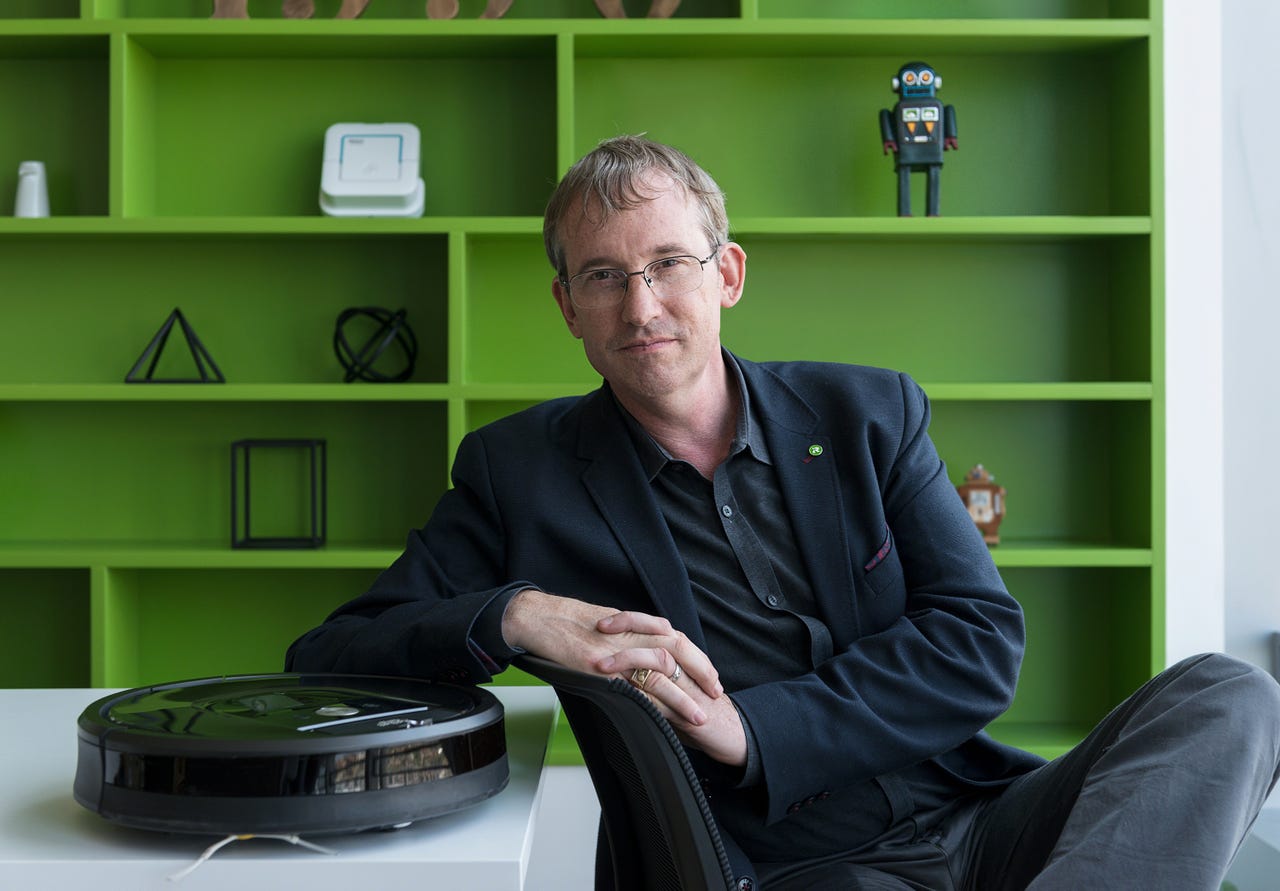Amazon acquires Roomba: iRobot CEO told us they will never sell your data


Colin Angle, iRobot CEO
Editor's Note, August 8, 2022: Back in 2017, we conducted an exclusive interview with iRobot's CEO Colin Angle about Roomba privacy issues. Last week, Amazon announced its acquisition of iRobot, which sparked Roomba privacy questions anew. We reached out to Angle to confirm whether iRobot's privacy policy will remain unchanged, but the company hasn't yet responded. In the meantime, here's our 2017 interview. We'll update when we receive a reply from iRobot.
It's been a challenging week for iRobot, the company behind the popular Roomba robotic vacuums.
ZDNET Recommends
It started with an interview in Reuters, in which the company's chief executive Colin Angle gave a clear impression that iRobot was selling consumers' home mapping data. We picked up the story and covered it here on ZDNet. In a column published on Wednesday, I looked at the security implications and wrote an open letter to Angle about my concerns.
Last night, Angle and iRobot got back to me on this issue. They provided the following response to the concerns I and others shared.
In response:
First things first, iRobot will never sell your data. Our mission is to help you keep a cleaner home and, in time, to help the smart home and the devices in it work better.
There's no doubt that a robot can help your home be smarter. It's the data it collects to do its job, and the trusted relationship between you, your robot and iRobot, that is critical for that to happen. Information that is shared needs to be controlled by the customer and not as a data asset of a corporation to exploit. That is how data is handled by iRobot today. Customers have control over sharing it. I want to make very clear that this is how data will be handled in the future.
You may also want your robot to work with other connected devices in your home. For this to work, we will also require your permission, and we will always ensure secure means of communication between devices.
Together, we're creating a future where robots help people live richer lives and ultimately retain their independence as they age. These conversations are useful in that they allow for clarity in our mission and commitments to our customers - and to have our commitment challenged and tested.
I hope this helps clarify our stance.
Sincerely
Colin Angle, Chairman, CEO and Founder, iRobot
I had some additional questions for Angle and iRobot, which they kindly responded to as well. As with Angle's letter above, the responses below were not edited in any way.
The Reuters report indicated how iRobot was in talks to sell the data. Can you respond with whether that was a misinterpretation by the reporter or a misstatement on the part of Angle? Was there, in fact, never any monetary negotiations or discussions over data?
This was a misinterpretation. [Angle] never said that iRobot would look to sell customer maps or data to other companies. iRobot has not had any conversations with other companies about data transactions, and iRobot will not sell customer data.
Where does data like photos or images taken from the camera get stored? Is it ever stored outside the home? If so, how is imagery data being used? Is it just being parsed and sent back to the robot, or is it being used to populate a larger database?
The Roomba 900 Series vacuuming robots capture mapping and navigation information via vSLAM, which stays on the robot. On all WiFi-enabled Roombas, usage data (e.g. how long did it clean, how far did it go, did it encounter any error codes, is it functioning correctly) can be sent to the cloud so it can be shown on the customer's mobile device. Images used for navigation are NOT sent to the cloud.
If a user agrees to having their map data viewable on their mobile device, then the map that the Roomba creates during a cleaning job is sent to the cloud where it is processed and simplified to produce a user-friendly map that ultimately appears in the iRobot HOME App.
It's also important to point out that the camera doesn't see things like we do. The robot perceives its environment as a pattern of light and dark points in its field of view. This pattern enables the Roomba 900 Series to localize or confirm its position on the map, so it can clean an entire level of a home. The camera is a low-resolution camera that is tracking multiple points of a room, such as along the edges of a table or light and dark contrasts of a window on a wall. It uses these points of reference to continually build and update its map of rooms within a home.
Special thanks to ZDNet's Jason Cipriani for facilitating the discussion between iRobot and ZDNet.
You can follow my day-to-day project updates on social media. Be sure to follow me on Twitter at @DavidGewirtz, on Facebook at Facebook.com/DavidGewirtz, on Instagram at Instagram.com/DavidGewirtz, and on YouTube at YouTube.com/DavidGewirtzTV.